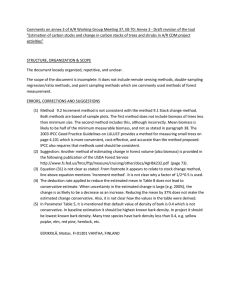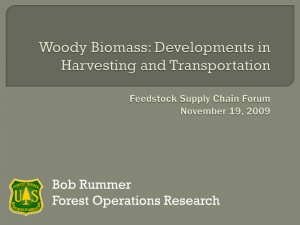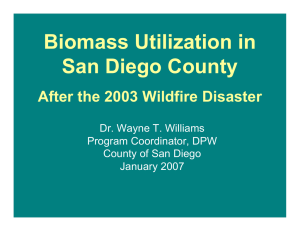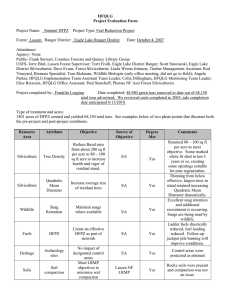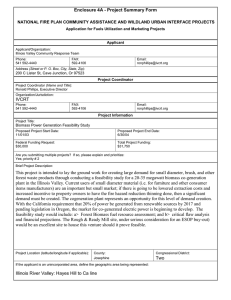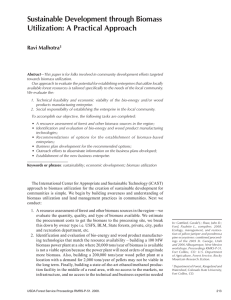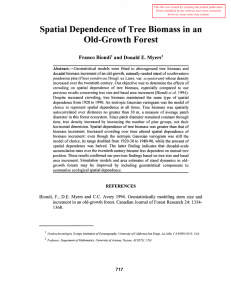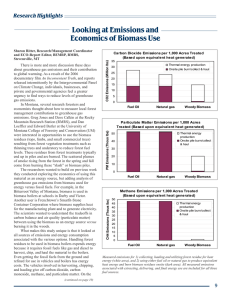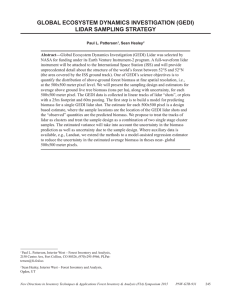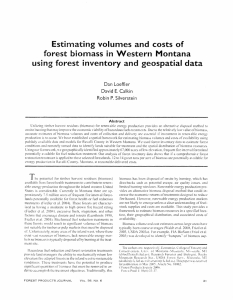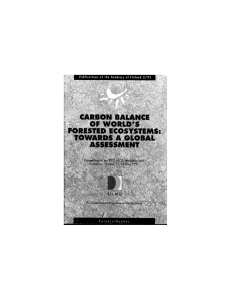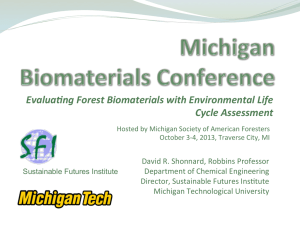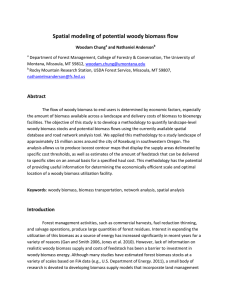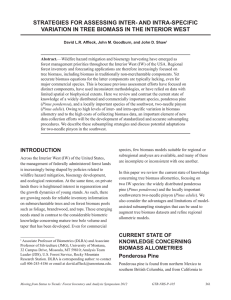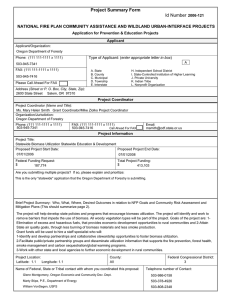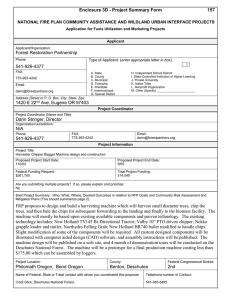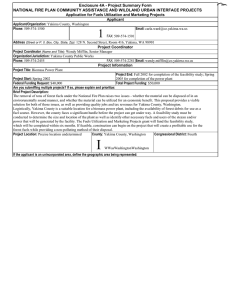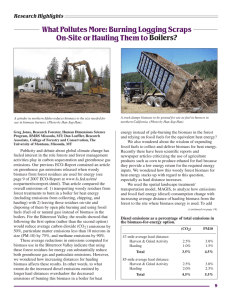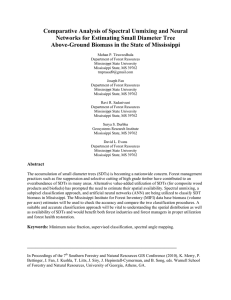Tree Biomass Estimates on Forest Land in California’s North Coast Region 1
advertisement
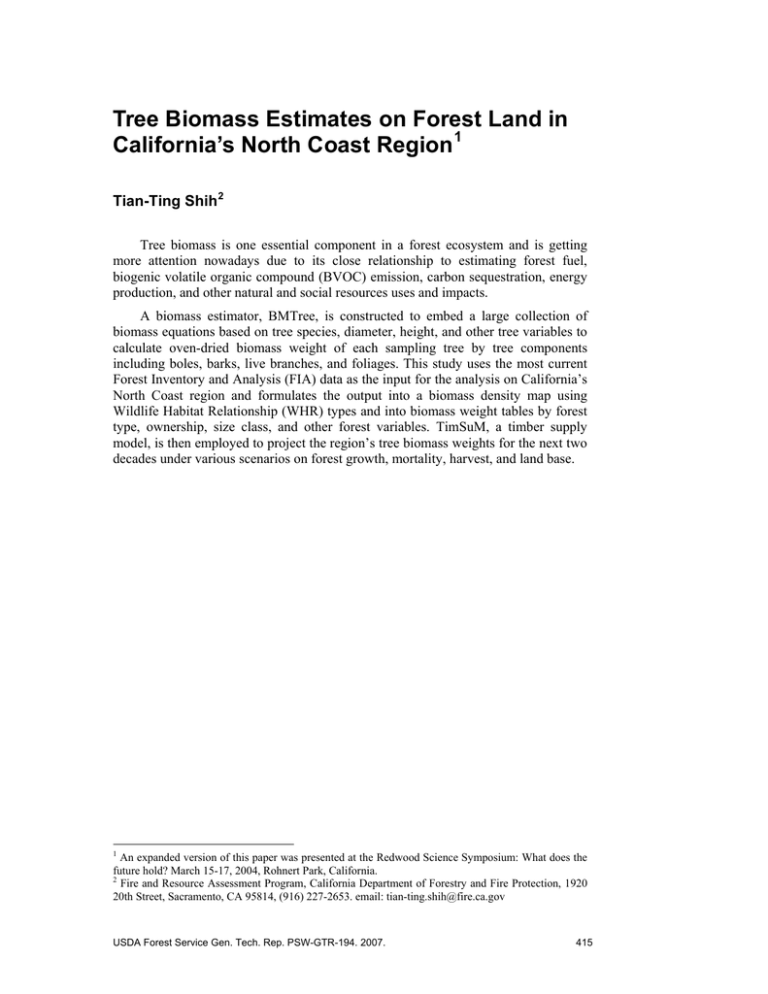
Tree Biomass Estimates on Forest Land in California’s North Coast Region 1 Tian-Ting Shih 2 Tree biomass is one essential component in a forest ecosystem and is getting more attention nowadays due to its close relationship to estimating forest fuel, biogenic volatile organic compound (BVOC) emission, carbon sequestration, energy production, and other natural and social resources uses and impacts. A biomass estimator, BMTree, is constructed to embed a large collection of biomass equations based on tree species, diameter, height, and other tree variables to calculate oven-dried biomass weight of each sampling tree by tree components including boles, barks, live branches, and foliages. This study uses the most current Forest Inventory and Analysis (FIA) data as the input for the analysis on California’s North Coast region and formulates the output into a biomass density map using Wildlife Habitat Relationship (WHR) types and into biomass weight tables by forest type, ownership, size class, and other forest variables. TimSuM, a timber supply model, is then employed to project the region’s tree biomass weights for the next two decades under various scenarios on forest growth, mortality, harvest, and land base. 1 An expanded version of this paper was presented at the Redwood Science Symposium: What does the future hold? March 15-17, 2004, Rohnert Park, California. 2 Fire and Resource Assessment Program, California Department of Forestry and Fire Protection, 1920 20th Street, Sacramento, CA 95814, (916) 227-2653. email: tian-ting.shih@fire.ca.gov USDA Forest Service Gen. Tech. Rep. PSW-GTR-194. 2007. 415


